Here's How Dermatologists Smooth and Prevent Forehead Wrinkles, Fast
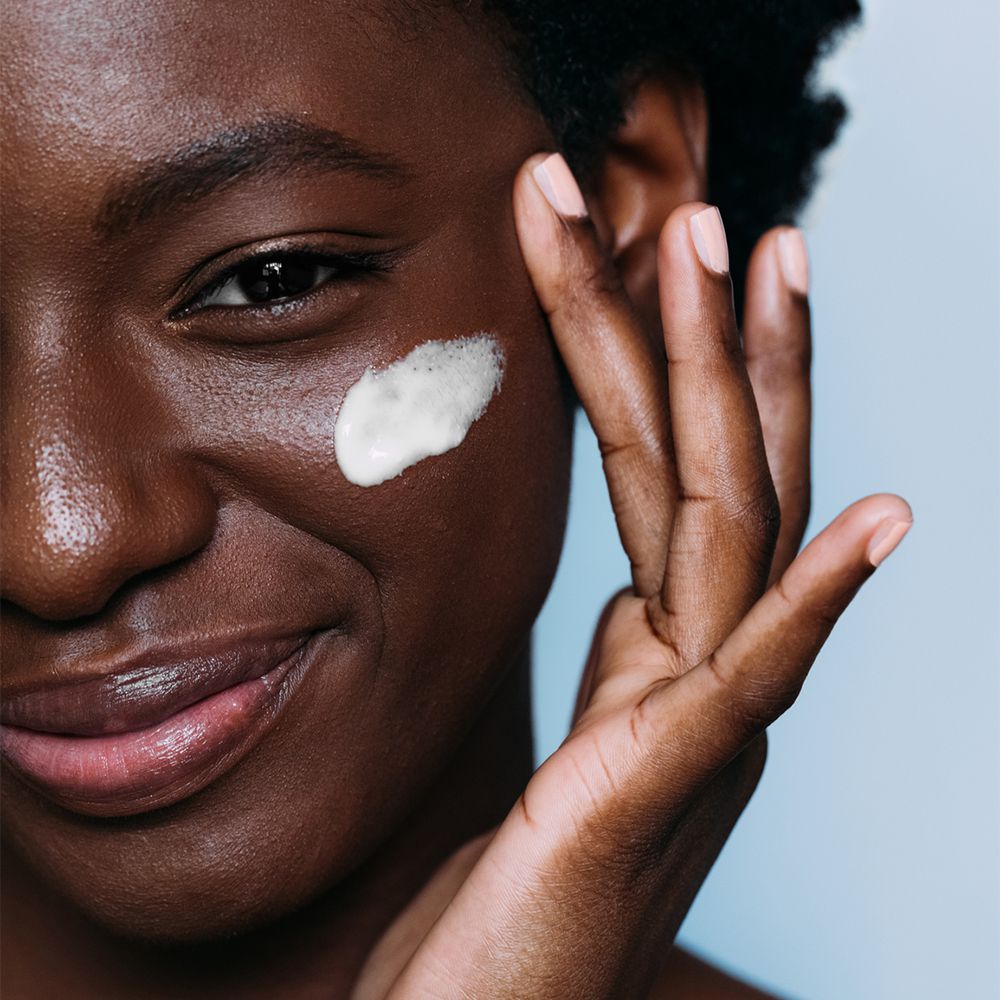
If you’ve ever looked in the mirror only to frown over fine lines on your forehead, know that you’re not alone. According to board-certified dermatologist and founder of Entière Dermatology, Dr. Melissa Kanchanapoomi Levin, forehead wrinkles are one of the top skincare concerns among patients 25 and up.
If you’re becoming increasingly concerned about your wrinkles, you might want to set up an appointment with your dermatologist. In the meantime, we’ll cover what causes forehead wrinkles in the first place, whether or not you can really get rid of them, and a series of tips to make them look less visible. Plus, as always, we have product picks for you. In other words, hold the phone and keep reading.
Common Causes of Forehead Wrinkles
As with many skincare concerns, age plays a role in the development of forehead wrinkles. That said, just because the passing of time causes a reduction in collagen and elastin production, doesn’t mean there aren’t also other factors that come into play. Think:
- Excessive sun exposure (which, according to Levin, “progressively slows the body’s natural production of collagen and elastin—thus contributing to laxity”)
- Facial muscle strength
- Repetitive forehead facial expressions (which board-certified dermatologist Dr. Michele Green says are caused by the activity of the frontalis muscles that allow you to raise your eyebrows)
- Staring into screens
- Stress
- Gravity
- Pollution
- Behavioral habits
- Genetics (which Levin says influence when a person starts to develop static wrinkles in the first place)
Noticed the term “static wrinkles?” While some people start to fret over forehead wrinkles the moment they see a picture of themselves smiling accompanied by a couple “11” lines, the truth is, wrinkles don’t become permanent (read: static), until they’re there when you’re not making a face at all. NYC-based board-certified dermatologist Dr. Dendy Engelman refers to this concept as dynamic vs. static wrinkles. Where dynamic wrinkles are a fleeting part of normal everyday expression, static wrinkles are those that leave their tracks while your face is at rest.
Can You Really Get Rid of Forehead Wrinkles?
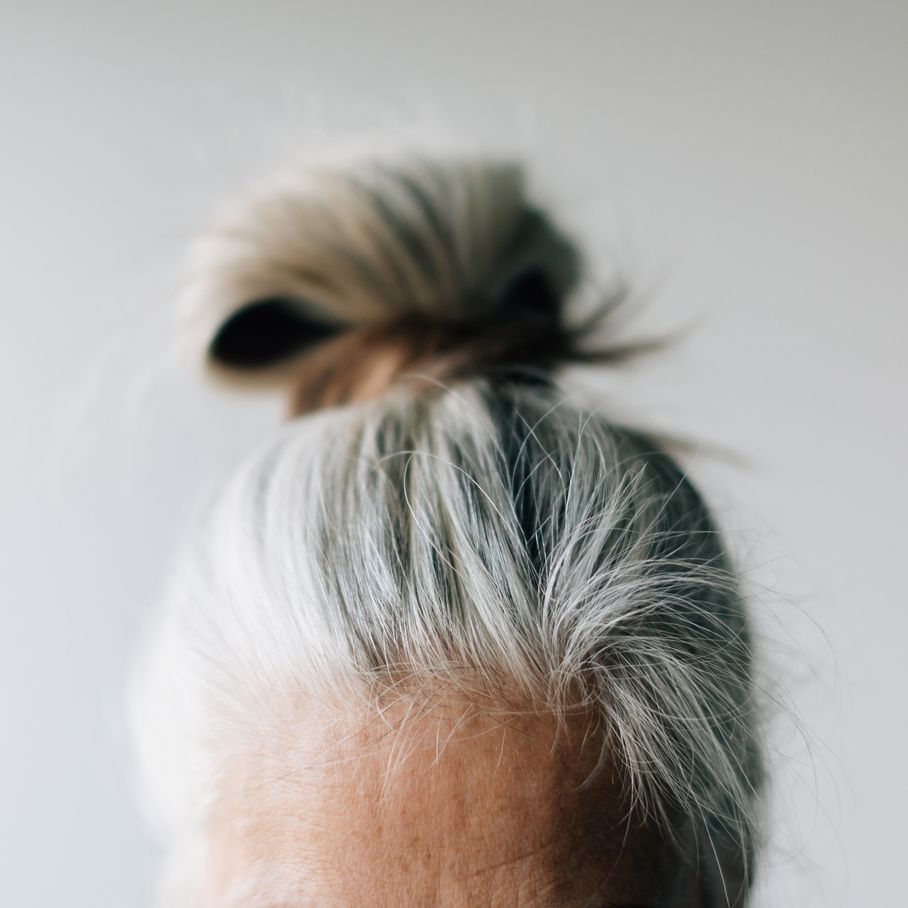
Just like the age-old question of whether or not you can make pores disappear, you can’t entirely vanish forehead wrinkles, but there are methods that quickly and effectively reduce their appearance. “As we age, we lose collagen and elastin, which helps our skin bounce back,” Engelman explains, noting that we can off-set or prevent some of this with topical applications of retinoid, antioxidants, ceramides, and other ingredients to help the skin perform its best.
Dermatology-certified Entière Dermatology nurse practitioner Ashton Frulla adds that it all comes down to the severity and initial cause of your wrinkles. “Very fine and superficial lines can be improved with good skincare, including strict sun protection, topical retinoids/retinol, peptides, and antioxidants,” he explains, noting that antioxidant serums, such as those containing vitamin C, can also be beneficial for protecting the skin from further damage from free radical formation and improvement hyperpigmentation and fine lines (more on that below). That said, if there are already heavy, static lines in place, he says that an in-office procedure such as resurfacing lasers, radiofrequency, or injections are necessary to make a noticeable difference (more on those, as well).
How to Prevent Forehead Wrinkles
Ask just about any dermatologist how to prevent forehead wrinkles and they’ll tell you to start implementing an anti-aging skincare routine. The trick is to know which products and treatments to incorporate into your regimen, as well as when to put the skincare routine into practice. As a general rule of thumb, dermatologists say that you should begin your preventative anti-aging journey sometime between your 20s and 30s. It’s hard to nail down a specific age since genetics play a role. That said, your best bet is to talk to your mom and grandma about when they first started noticing fine lines and wrinkles so that you can get ahead of the game.
Feeling overwhelmed? Don’t be. Ahead you’ll find seven dermatologist-recommended tips to prevent and smooth forehead wrinkles.
01
of 09
Use Vitamin C and SPF Every Morning
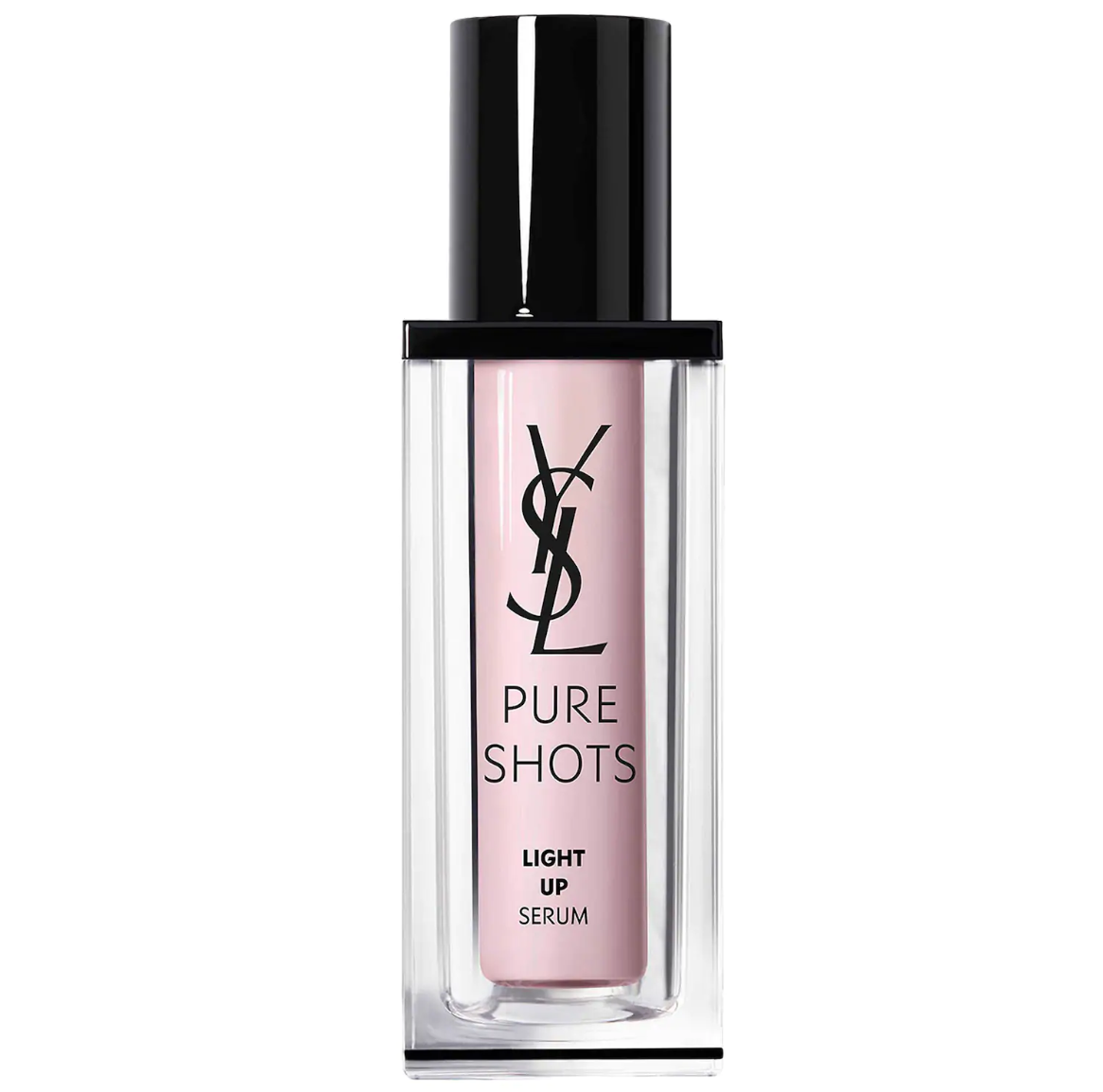
Yves Saint Laurent
Pure Shots Light Up Brightening Serum
$88
Sun exposure plays a major role in the youthful appearance of skin. The more sun you get, the drier, spottier, and looser your skin may become over time. As such, it’s important to add ingredients into your routine that can help reverse some of the damaging effects.
That’s why you should always apply vitamin C (to boost collagen production, fight free radical damage, protect the skin from UVA and UVB rays, help fade the appearance of dark spots, and lend to a brighter-looking complexion) and sunscreen with at least SPF 30 protection to help shield against the sun’s daunting effects, according to Green.
And, for extra anti-wrinkle protection, she also suggests wearing sunglasses when outdoors which prevent you from squinting and frowning—two facial expressions that could potentially cause “11” lines and other forehead wrinkles.
02
of 09
Look for Products Loaded With Hyaluronic Acid
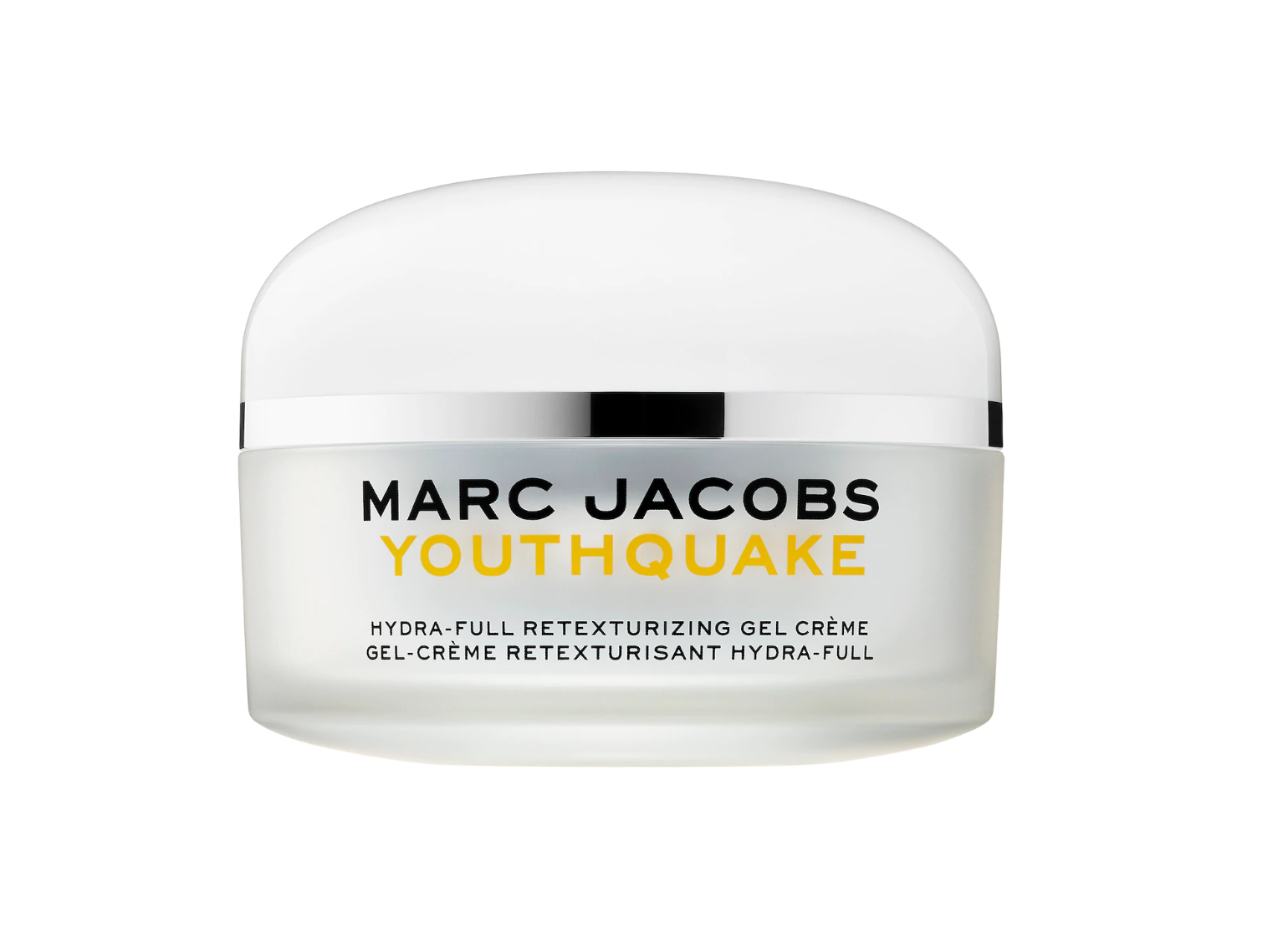
Marc Jacobs
Youthquake Hydra-full Retexturizing Gel Crème Moisturizer
$89
Hyaluronic acid is one of the most coveted ingredients on the skincare market thanks to its ability to hold 1,000 times its weight in water. While this is incredible from a hydration standpoint, Engelman points out that it’s also great for minimizing the appearance of fine lines and wrinkles thanks to its plumping abilities.
03
of 09
Start Using Retinoids at Night
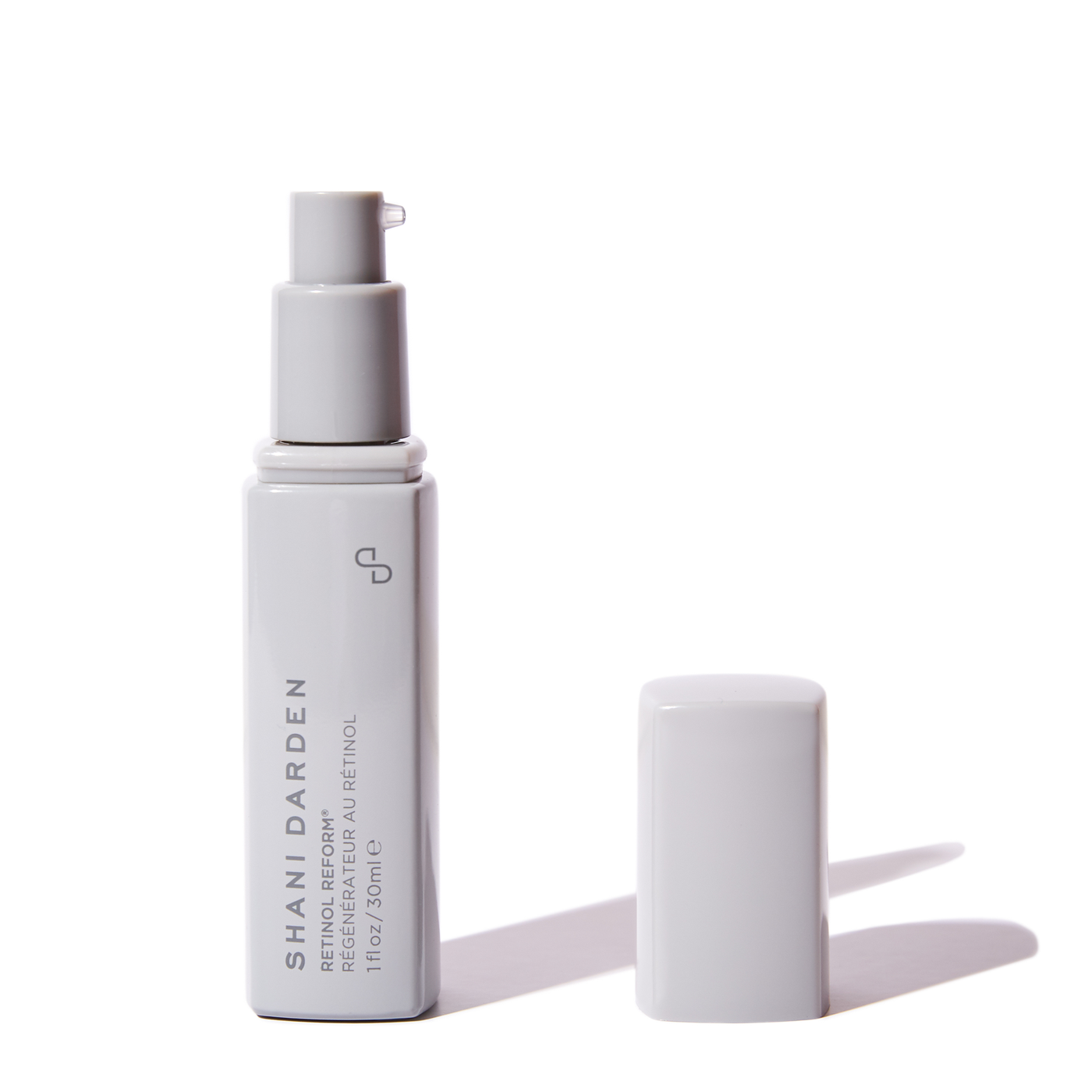
Shani Darden
Retinol Reform
$88
Engelman and Green both tout the necessity of retinoids in any anti-aging routine. Where Engelman points out that retinoids are proven to stimulate collagen growth, Green adds that retinol (aka a vitamin A derivative and weaker form of retinoid) works best at night to reduce fine lines and wrinkles. This is largely due to the fact that (1) the skin repairs itself at night, so applying this topical may boost the process, and (2) retinoids (and retinol under their umbrella) can often create mild irritation that will typically subside by morning.
04
of 09
Get a Professional Facial Treatment
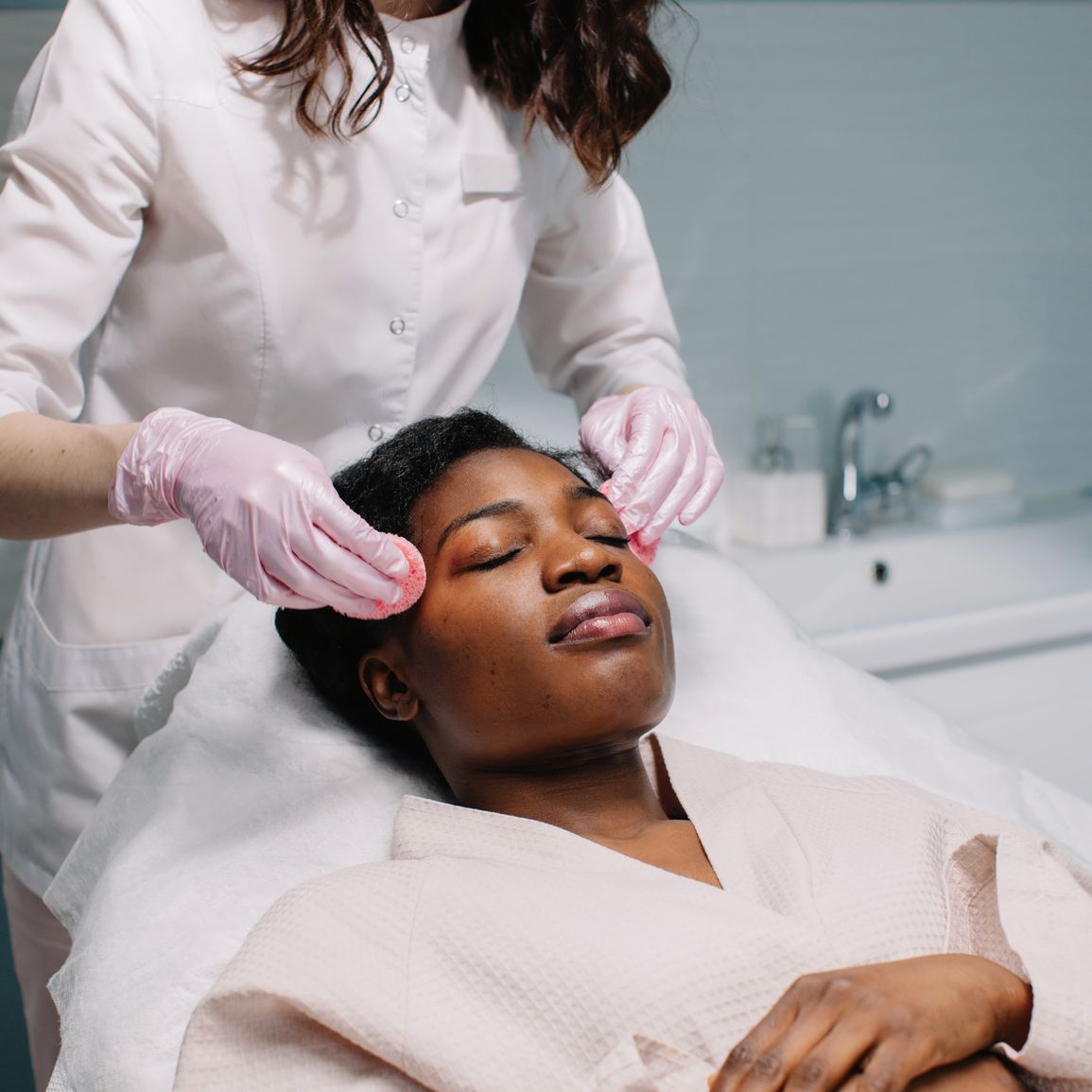
If you’re late to the anti-aging party and didn’t make it in time for prevention, all of the derms we spoke to recommend heading into a dermatologist’s or licensed esthetician’s office for a professional treatment—of which there are many.
First, we have Fraxel: “Fraxel Dual uses fractional laser technology which penetrates deep into the skin layers to trigger the body to promote its natural healing, improving overall texture and skin tone,” Green explains. “The results of Fraxel are gradual over time as the body replaces old damaged skin cells replacing it with new collagen and elastin.”
Then there’s Ematrix: “This is a sublative laser resurfacing treatment that tightens the skin, rebuilds collagen, and improves skin texture,” Green shares. “Ematrix releases heat energy in the dermis of the skin to stimulate collagen production.”
Next up, Thermage: “This is an excellent treatment for forehead wrinkles and works on all skin types,” Green explains. “Thermage uses radiofrequency technology to deliver heat to the innermost layers of the skin. This deep tissue heating stimulates collagen and improves the overall texture of the skin.”
For the KUWTK fans, vampire facelifts are also an option: “This is a combination of microneedling with PRP (platelet rich plasma),” Green explains. “PRP is a concentrated platelet-rich plasma protein that has a greater concentration of growth factors than whole blood. Growth factors are what our cells used to heal and regenerate healthy tissue.” While somewhat bloody (though not nearly as much as KKW’s video portrayed), it’s safe for all skin types (take it from someone with sensitive skin who has gotten this treatment done firsthand).
Lastly, there are microcurrent facials: Like their at-home counterparts, Engelman explains that these “use low-level electrical current to trigger the body’s natural skin enhancement chemicals at a cellular level, giving skin therapists an effective tool against the signs of skin aging.” As a whole, she says that in-office microcurrent treatments improve muscle tone, lift jowls, aid in lymphatic drainage, and improve circulation.
05
of 09
Boost Cell Turnover With Peptides
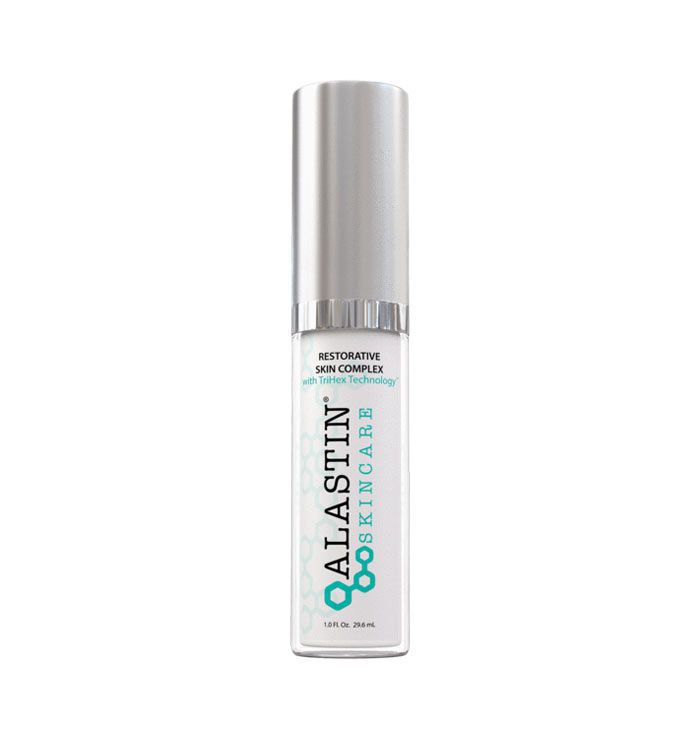
Alastin
Restorative Skin Complex
$195
Next up: Peptides. “These are proteins that stimulate the growth of new cells and facilitate cell turnover while you sleep,” Green explains. “Peptides also stimulate the production of collagen, which is responsible for the skin’s firmness and suppleness.”
Frulla seconds this, noting that peptide serums, such as Alastin Restorative Skin Complex, help promote collagen and elastin production while boosting skin hydration overall.
06
of 09
Try an At-Home Toning Device
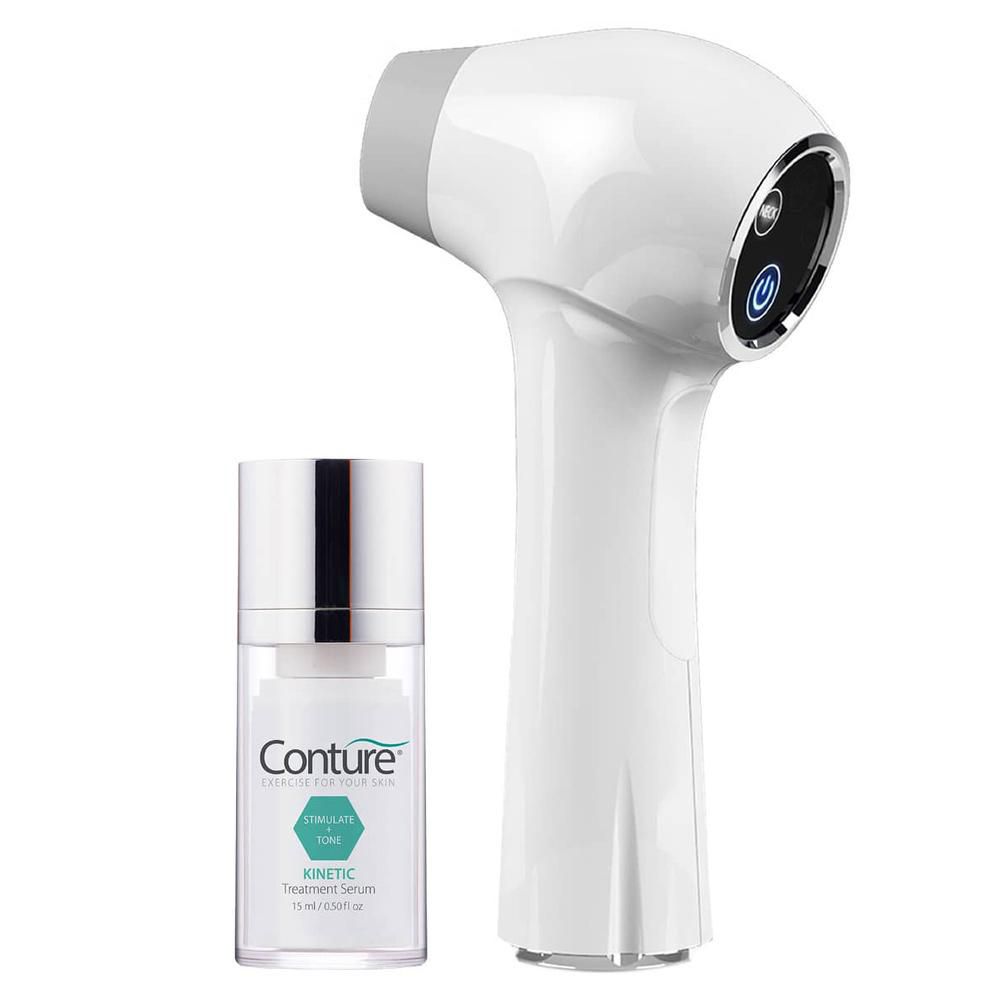
Conture
Kinetic Skin Toning System
$165
Sure, jade rollers and gua sha might feel good, but when it comes to really preventing and diminishing already-established wrinkles, you want to punch up the power. That’s where toning devices come into play. Engelman swears by them. “These devices can help increase the amount of absorption of active ingredients, so they penetrate into the deep layers of the skin giving maximum benefits,” she explains.
She recommends the Conture Kinetic Toning Device: “It has a multitude of benefits with over 250,000 hours of research behind it. With three settings for face, neck, and chest, the device combines isometric compression and low-frequency vibrations to prepare the skin for up to 300 percent more absorption of active ingredients up to 45 minutes after use.”
Then there are microcurrent devices, like those offered from NuFace, which use low-level currents that mimic the body’s natural current meant to help reduce and reverse the signs of aging. In other words, you have options.
07
of 09
Consider Injectables for Immediate Results
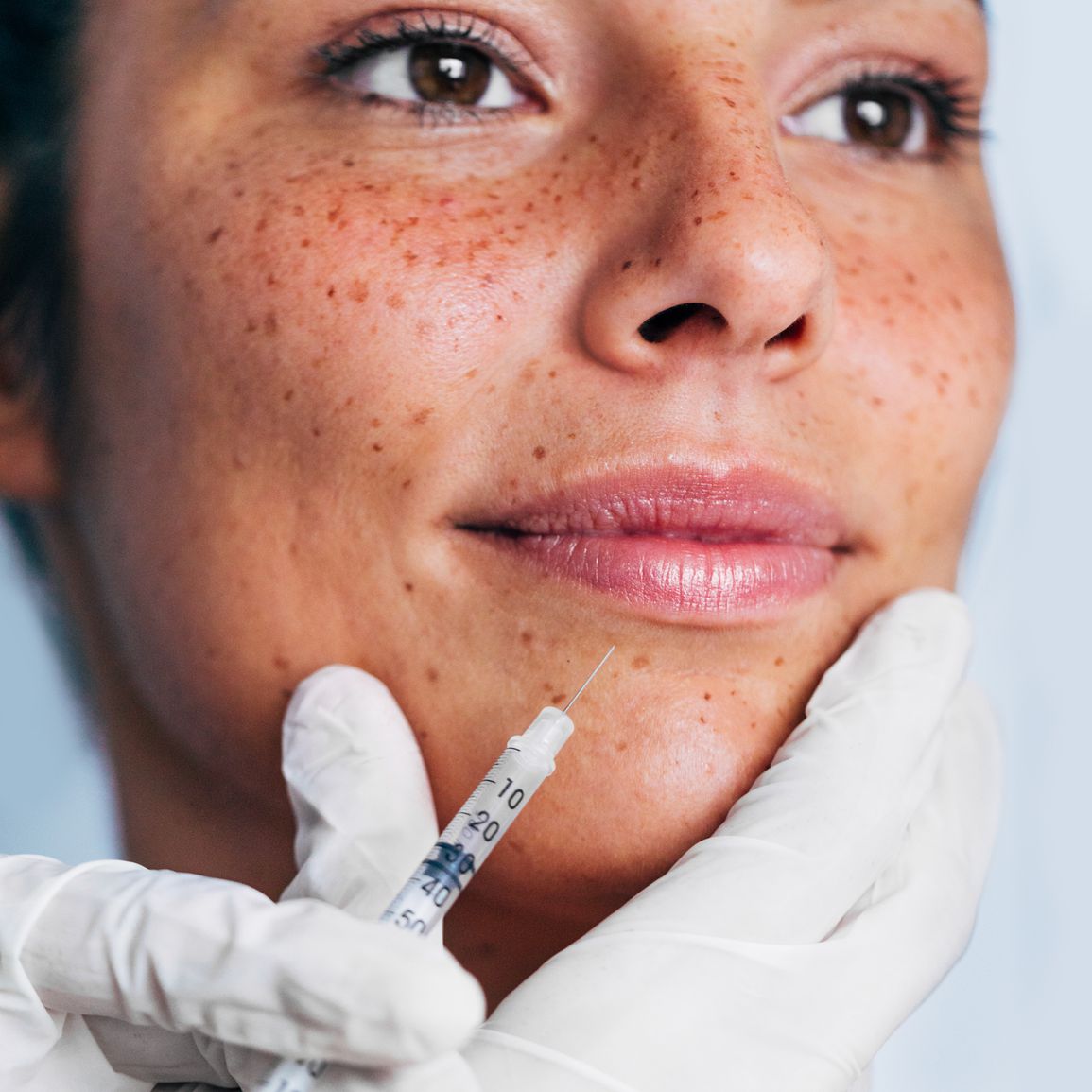
At the end of the day, if updating your skincare routine with anti-aging ingredients, at-home treatments, and in-office facials doesn’t work—and, most importantly, if you really want to put an end to your fine lines—it’s time to turn your attention to injectables.
While neuromodulators like Botox are likely the first things that come to mind (we’ll get to those, don’t worry), Engelman says you can start with hyaluronic acid if you’re looking for something a little less aggressive (read: something that already naturally occurs in the body). “You have immediate textural improvement with injectable hyaluronic acid,” she says. “It plumps fine lines and wrinkles, smoothing the overall complexion and adding volume.”
If you’re ready to go all-in with your anti-aging process, Levin says to get to know your neuromodulators. While Botox, Dysport, Xeomin, and, most recently, Jeaveau, are the only FDA-approved neuromodulators for the “11” lines, Botox is the only one that’s FDA-approved for between the brows, on the forehead, and around crow’s feet (if that’s also a concern for you).
But how does it work? According to Engelman, when Botox is injected into the muscles, it binds to the receptors on the muscles so that your muscles don’t receive the signal to contract. “Therefore you won’t be able to make dynamic wrinkles (wrinkles you make when frowning),” she explains. And if you’re making less dynamic wrinkles, then there may be less of a chance for static wrinkles to set in—hence the idea of preventative Botox in your mid-to-late 20s and early 30s.
Whichever you choose, Levin says to be prepared to schedule appointments every three to four months to maintain the results.
And, whatever you do, remember that while there is no downtime as the result of injections, there are a few restrictions. “Once Botox has been injected, you cannot massage the treated area for 72 hours and must keep your head upright for at least four hours post-injection,” Green starts. “Rubbing the area of treatment can result in moving Botox to unwanted areas. Since Botox is superficially injected, it needs an adequate amount of time without movement for it to dissipate appropriately.” What’s more, according to our experts, you shouldn’t drink alcohol or partake in excessive workouts for 12 to 24 hours post-treatment. While bruising is unlikely, these activities may exacerbate the possibility.
08
of 09
Schedule a Thread-Lifting Treatment
If you’re looking for another way to smooth forehead wrinkles and fine lines, consider getting a forehead thread lift. According to Illinois-based board-certified dermatologist Dr. Jessie Cheung, this procedure calms the muscles while holding them in place. In turn, the forehead is transformed into a smooth, wrinkle-free surface. Similar to other treatments, Dr. Cheung says the results are not long-lasting and usually last about a year and a half.
So, how does it work? “Threads are placed under the skin and have anchoring barbs or cones to lift and reposition [the] skin. Threads are made of materials that stimulate collagen so that along with an immediate lifting effect, you have skin rejuvenation with a gradual tightening and smoothing effect,” Cheung explains. Although thread-lifting is an invasive procedure, she adds that the recovery time is short.
Similar to injections, Cheung notes that multiple threads can be inserted in the same place. However, she advises waiting at least 8 weeks before treating in the same area.
09
of 09
Look to Laser Skin Tightening Treatments
Dr. Cheung also recommends laser skin tightening treatments, which “to help sandwich the muscles in place, from the surface down.” She calls out Ultherapy, an FDA-approved skin lifting and tightening procedure, for its ability to lift both the forehead and brows. When it comes to determining how many laser treatments to get, Cheung says it ultimately comes down to one’s needs. “If you’ve lost a lot of forehead and temple volume, or if you have a very low brow, you may need a few rounds of laser skin tightening,” she says.







